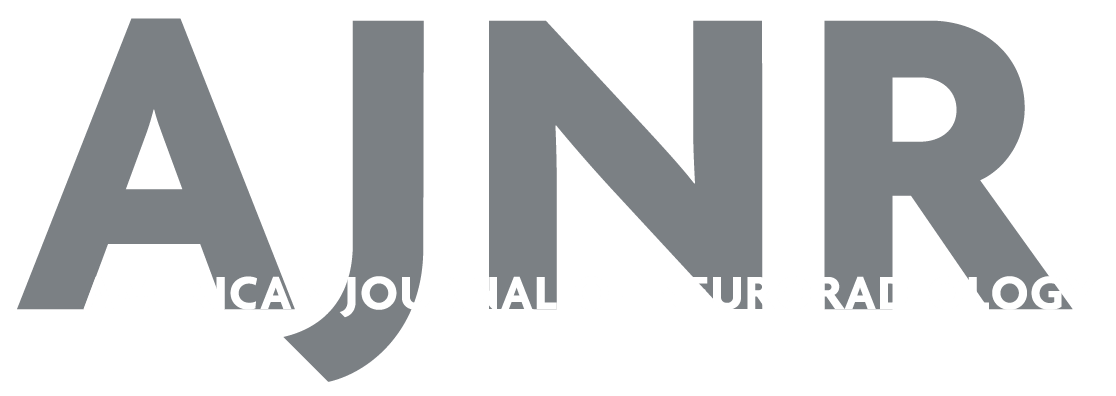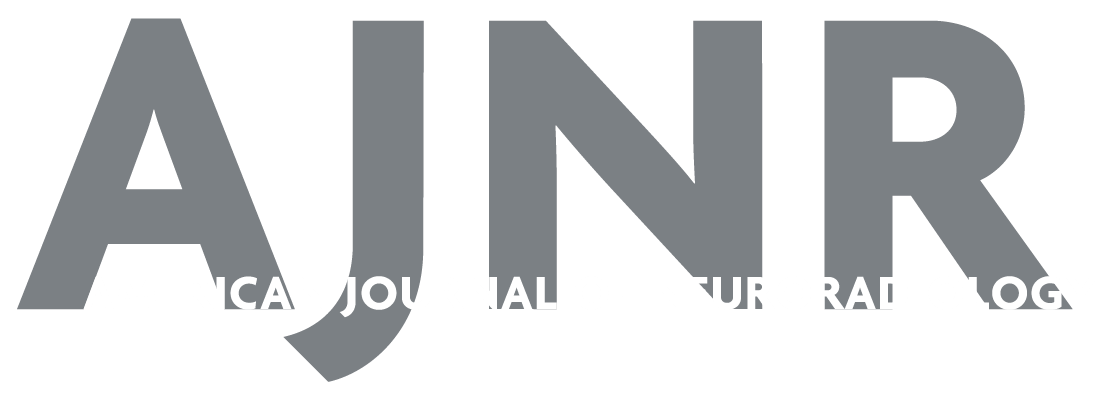Abstract
BACKGROUND AND PURPOSE: Middle cerebral artery stenosis is not frequent but a well-established cause of first and recurrent ischemic stroke. Our aim was to investigate middle cerebral artery stenosis in the biethnic (Jewish and Arab) population of patients with acute ischemic stroke and transient ischemic attack in northern Israel.
MATERIALS AND METHODS: The study population included 1344 patients from the stroke data registry who had been hospitalized in the neurologic department because of acute ischemic stroke (1041) or TIA (303) and had undergone transcranial Doppler sonographic examination during the hospitalization.
RESULTS: Of the 1344 patients, 120 (8.9%) were found to have MCA stenosis. The patients with intracranial stenosis were older and had more vascular risk factors (hypertension, diabetes, and hyperlipidemia) and vascular diseases (ischemic heart and peripheral vascular disease) than those without intracranial stenosis. Logistic regression analysis revealed that diabetes (P = .002) and peripheral vascular disease (P = .01), but not ethnicity, were independent and significant predictors for the presence of MCA stenosis.
CONCLUSIONS: An independent and significant correlation was found between MCA stenosis and vascular risk factors (diabetes mellitus) and vascular diseases, thus emphasizing the similarity of intracranial MCA stenosis and other vascular diseases originating from atherosclerosis. There was no influence of ethnicity on intracranial stenosis in our population.
ABBREVIATION:
- TCD
- transcranial Doppler sonography
Intracranial stenosis is most commonly due to an atherosclerotic lesion of the intracranial vessels, leading to subsequent narrowing or occlusion of these vessels.1,2 This condition is being increasingly recognized as an important and underestimated etiology in acute ischemic stroke.3⇓–5 Differences in the prevalence of intracranial stenosis in various populations have been reported, with the most vulnerable patients seeming to be Asians, Hispanics, and African Americans.6⇓⇓⇓–10 Because intracranial stenosis usually represents an atherosclerotic lesion, it is not surprising that there is a clear correlation between intracranial stenosis and vascular diseases and vascular risk factors.11⇓⇓⇓–15
The aim of the present study was to search for possible determinants of potentially symptomatic middle cerebral artery stenosis in patients with stroke and transient ischemic attack in a biethnic (Jewish and Arab) population of northern Israel.
Many studies in the literature suggest different transcranial Doppler sonography (TCD) parameters (peak systolic velocity, mean velocity) and different values as cutoffs for the diagnosis of intracranial stenosis. There are also many different definitions in the literature of intracranial stenosis (eg, “mild, moderate, and severe,” “less and more than 50%,” “50%–69% and more than 70%,” and so forth). There are still no generally accepted criteria for moderate intracranial stenosis. In this study, potentially symptomatic intracranial stenosis was defined as cases in which TCD examination showed a peak velocity in the middle cerebral artery, either left or right, of ≥140 cm/s. This value was used by some researchers as a criterion correlating with MCA stenosis of ≥50%.3,16
Materials and Methods
This study was based on the stroke data registry from the vascular laboratory of the Department of Neurology and the Prometheus computerized registry system containing all details of patients hospitalized in the Rambam Health Care Campus, Haifa, Israel, from the end of 1999 to 2010. The 1344 patients included in the study were those consecutively referred from the neurologic department to the vascular laboratory for transcranial Doppler examination because of acute ischemic stroke or TIA. TIA was defined clinically as a transient episode of neurologic dysfunction of ischemic origin lasting <24 hours. Of those patients included in the study, 1041 had cerebral vascular accident and 303 had TIA. From those patients with cerebral vascular accident, 117 (11.2%) instances were attributed to the vertebrobasilar territory. Of strokes attributed to the carotid territory, 484 (52.4%) were left-sided. Data for every patient in the study included demographic variables, risk factors, vascular diseases, and results of the TCD examination.
A Pioneer TC 8080 TCD machine (Viasys Nicolet, Madison, Wisconsin), was used. Parameters used for monitoring were the following: depth of insonation of MCA, 51–63 mm; sample volume, 3 mm; power of insonation, 100%; range, 154 cm/s; 256-point fast Fourier transformation. All examinations were performed by a highly experienced TCD operator (E.K). Intraobserver agreement for the TCD examination was estimated by the comparison of MCA peak systolic velocities at 2 consecutive examinations and was very good (κ = 0.84).
The assignment of ethnicity (Arab or Jewish) was performed by place of birth and residence in addition to first and family names. We examined interobserver agreement among 4 observers for this method of classification of ethnicity in a biethnic northern Israeli population, and agreement was found to be almost perfect, κ = 0.96, as assessed by the Fleiss κ statistic.17
Hypertension was defined by either a systolic blood pressure of ≥140 mm Hg or a diastolic blood pressure of ≥90 mm Hg, by the use of antihypertensive medication, or by a previously established diagnosis of hypertension (in most cases). In those cases in which the hypertension was diagnosed for the first time, the diagnosis was based on repeat measurements throughout the hospitalization. Diabetes mellitus was defined by a recorded random blood glucose level of ≥200 mg/dL, by the use of insulin or an oral hypoglycemic agent, or by a previous diagnosis of diabetes mellitus. Hyperlipidemia was defined by the use of lipid-lowering medications; by a fasting serum total cholesterol concentration of >200 mg/dL, a low-density lipoprotein cholesterol concentration of >140 mg/dL, a high-density lipoprotein cholesterol concentration of <40 mg/dL, or a triglyceride concentration of >150 mg/dL; or by a previous diagnosis of hyperlipidemia. Atrial fibrillation was diagnosed by a physician who reviewed patient electrocardiograms, by following the medical records, or by a previous medical diagnosis. Ischemic heart disease was defined by a history of myocardial infarction, angina pectoris, signs of ischemia on the electrocardiogram, or by the medical records. Peripheral vascular disease was defined by a history of intermittent claudication, peripheral vascular surgery or angioplasty, or by a previous diagnosis. Permission for this study was obtained from the local ethics committee.
Statistical Analysis
Basic comparisons between groups of patients with and without MCA stenosis consisted of t tests for normally distributed continuous data and χ2 tests for categoric data. In cases in which there were >2 levels in the nonparametric variables tested, additional χ2 tests were conducted to further examine the distributions. To control for the multiple influences of risk factors in predicting stenosis, we conducted logistic regression analyses. JMP (SAS Institute, Cary, North Carolina) was used for the statistical analyses.
Results
The mean age of the 1344 patients was 64 ± 12.9 years (range, 20–94 years). There were 360 female (26.8%) and 310 Arab (23.1%) patients. Of the 1344 patients, 1041 (77.5%) had acute ischemic stroke and 303 had TIA. Table 1 presents the distribution of vascular diseases and vascular risk factors among the patients included in the study.
Distribution of demographic and vascular risk factors and vascular diseases in the whole group of patientsa
TCD data showed that 120 patients (8.9%) had potentially symptomatic MCA stenosis. Seventy-seven of these patients had clinical manifestations related to the side of stenosis, and 34 (28.3%) had bilateral potentially symptomatic intracranial stenosis of the MCA. The patients with intracranial stenosis were older and had more vascular risk factors (hypertension, diabetes, and hyperlipidemia) and vascular diseases (ischemic heart disease and peripheral vascular disease) than those without intracranial stenosis.
Logistic regression analysis revealed that only diabetes mellitus (P = .002) and peripheral vascular disease (P = .01) were independent and significant predictors for the presence of MCA stenosis (Table 2). No influence of ethnicity on the presence of significant intracranial stenosis was found, either before or after the logistic regression analysis.
Logistic regression analysis of possible predictors of intracranial stenosis in patients with acute ischemic stroke or TIAa
Discussion
In this study, we explored the possible predictors of potentially symptomatic MCA stenosis in a large group of patients with stroke and TIA, representing a biethnic population in northern Israel that has not been previously studied. TCD is considered a reliable method for the detection of intracranial stenosis.18 The prevalence of MCA stenosis in the population of patients with stroke and TIA in northern Israel was found to be similar to that in other studies examining white patients.19,20 As expected, we found that patients with potentially symptomatic intracranial stenosis were older and had more vascular risk factors. Logistic regression analysis showed that diabetes mellitus and peripheral vascular disease were independent and significant predictors of intracranial stenosis in the studied population. Similar data pointing to the important influence of diabetes in the appearance of intracranial stenosis can be found in the literature.21⇓–23
The other significant finding was a high prevalence of peripheral vascular disease in patients with potentially symptomatic intracranial stenosis. Such data may indicate vulnerability of the peripheral arteries of relatively small diameter in a different location for the development of atherosclerotic lesions in some patients. This finding is supported by other studies that found a correlation between intracranial stenosis and peripheral vascular disease.24 We did not find any differences in the prevalence of intracranial stenosis between the Jewish and the Arab patients, either before or after the logistic regression, contrary to many other populations studied.
Limitations
The main limitation of this study was that although all patients included in the study were consecutively examined by TCD, those patients who were referred for TCD examination were not consecutive. The main reason for not referring patients for TCD was the severity of the stroke or comorbidities. Some other patients were, on the contrary, in good condition and were discharged from the hospital before TCD. Overall, we were able to perform TCD in 61% of patients included in our stroke data base. Because many of those patients had severe stroke due to large-vessel disease, it seems that some underestimation of the prevalence of potentially symptomatic intracranial stenosis may have occurred in our cohort.
Another limitation of our study was that we were not able to evaluate internal carotid artery stenosis in our patients simultaneously with intracranial stenosis. ICA stenosis in the neck is an established important cause of TIA and stroke, and it is important to see MCA stenosis in the perspective of incidence, coexistence, and so forth with ICA stenosis.
Conclusions
This study dealt mainly with the predictors of potentially symptomatic intracranial stenosis and showed that diabetes and peripheral vascular disease, but not ethnicity, were independent and significant predictors for the presence of MCA stenosis. The screening of patients with stroke and TIA for the presence of potentially symptomatic intracranial stenosis is important because evidence exists that patients with MCA stenosis are prone to severe and devastating first and recurrent strokes and these require more aggressive treatment than any other group of strokes related to large-vessel disease.25 Finally, data about MCA stenosis are relatively limited compared with numerous other sites of atherosclerosis related to stroke. Further exploration of different aspects of MCA stenosis, including genetic and population-based screening studies, is needed for better understanding of stroke mechanisms in this group of patients.
References
- 1.
- 2.
- 3.
- 4.
- 5.
- 6.
- 7.
- 8.
- 9.
- 10.
- 11.
- 12.
- 13.
- 14.
- 15.
- 16.
- 17.
- 18.
- 19.
- 20.
- 21.
- 22.
- 23.
- 24.
- 25.
- Received December 1, 2013.
- Accepted after revision May 29, 2014.
- © 2015 by American Journal of Neuroradiology






